Prized for their delicate frilly leaves and flowing fronds, Maidenhair Ferns have long established themselves as popular houseplants across the world.
And Adiantum raddianum – the Delta Maidenhair Fern – is perhaps the most elegant of all.
Shockingly named after the hair one grows on their naughty bits (go ahead and clutch those pearls!), there really is no plant that brings such fluffy, bushy foliage to the home or a terrarium.
They’re notoriously tricky to keep alive, so knowing how to care for them is crucial if you want your plant to be around for a while.
Stick with me, and I’ll show you how to keep your bush fern looking fabulous.
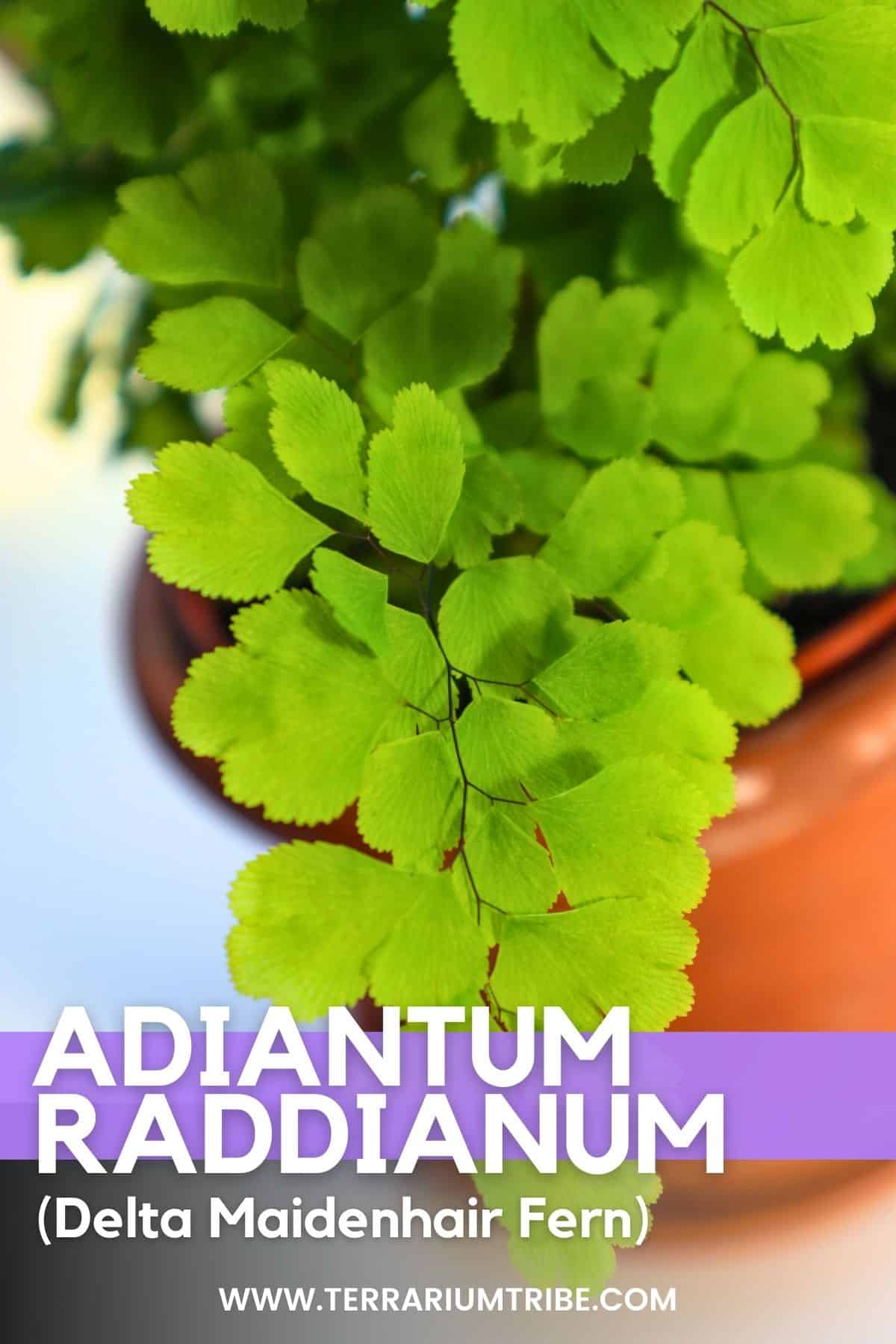
Where to Buy Adiantum raddianum
See the links below to purchase from reputable terrarium plant shops and marketplaces (may include affiliate links).
Delta Maidenhair Care Essentials
| Plant Type | Fern |
| Lighting | Bright, indirect light |
| Temperature | 65-80°F (18-27°C) |
| Watering | Regular, even moisture |
| Humidity | High humidity (60-90%) |
| Growth | Up to 1ft+ |
Delta Maidenhair Fern Lighting
Adiantum raddianum will do best with bright, indirect light.
Typical of a tropical Fern, really.
A good way to check if you have the right light situation is that you should be able to comfortably read a book but not feel any warmth on your skin.
I find North and East-facing windowsills to be the best placement.
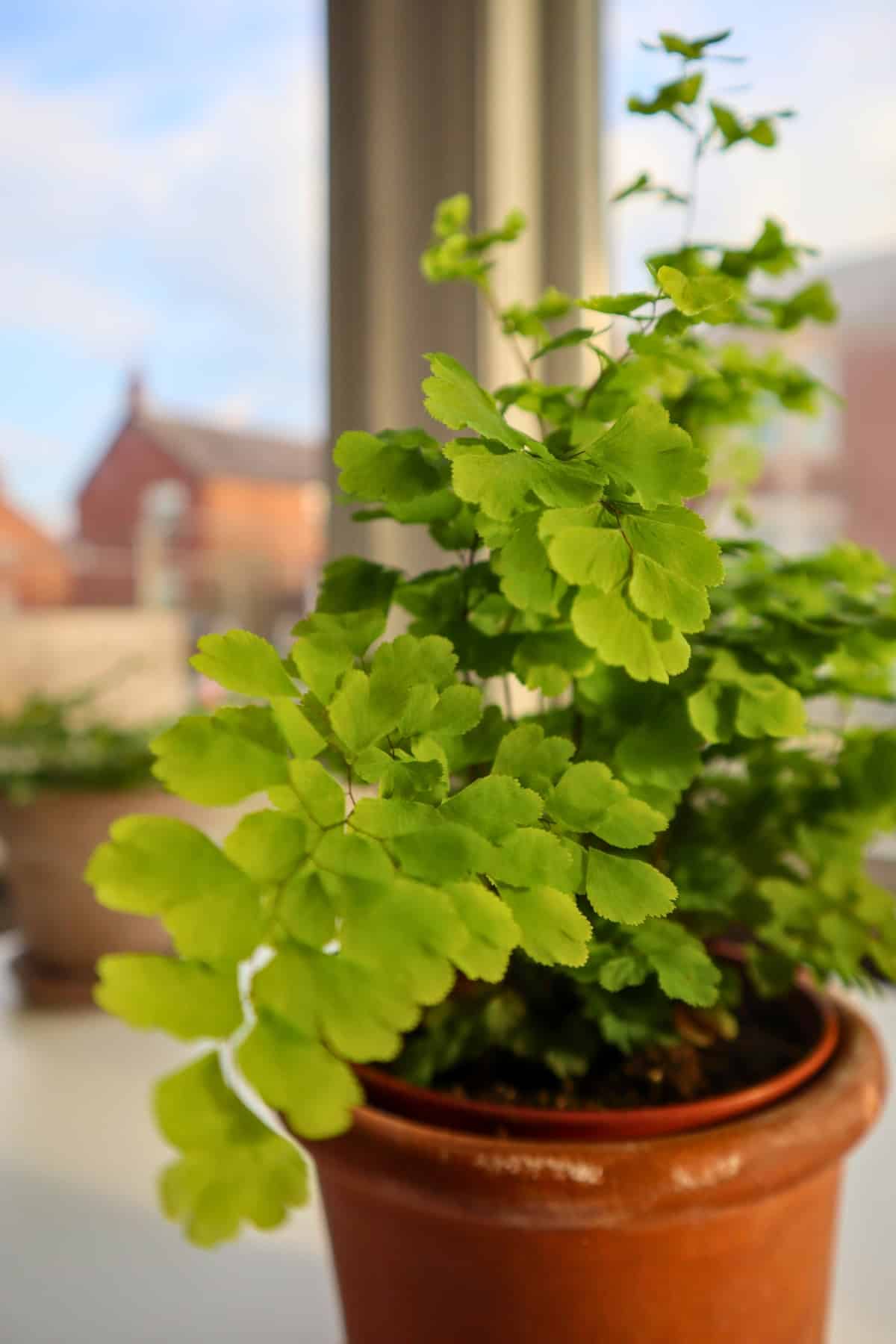
It still requires plenty of sunlight to thrive, though, and it won’t fare well in low-light conditions. You can always supplement with a grow light if necessary.
And even more importantly, they can’t handle harsh direct sunlight without scorching the delicate foliage.
I gave a terrarium to my mum when I was on vacation. It got left in direct light, and it’s safe to say it was burnt to a crisp.
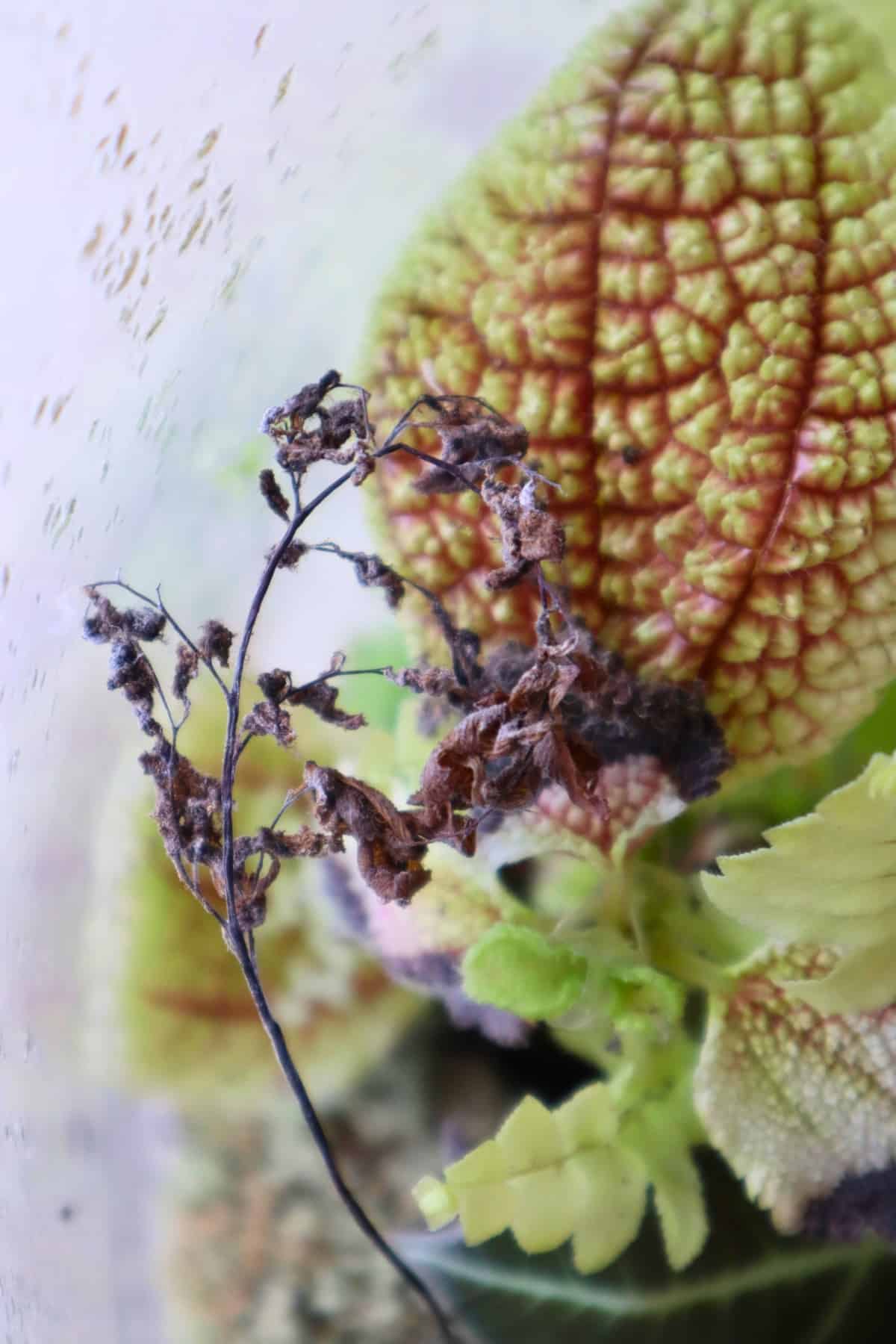
Adiantum raddianum Watering Requirements
Delta Maidenhair Ferns have a serious reputation for demanding watering needs. And honestly, the rumors are true.
You, quite frankly, cannot let this plant dry out.
This is what makes it such a great terrarium plant; it loves moisture, humidity, and consistency.
In fact, it loves water so much that it can even be grown submerged in fresh water! Making it a great choice for more advanced palaudarium and riparium setups.
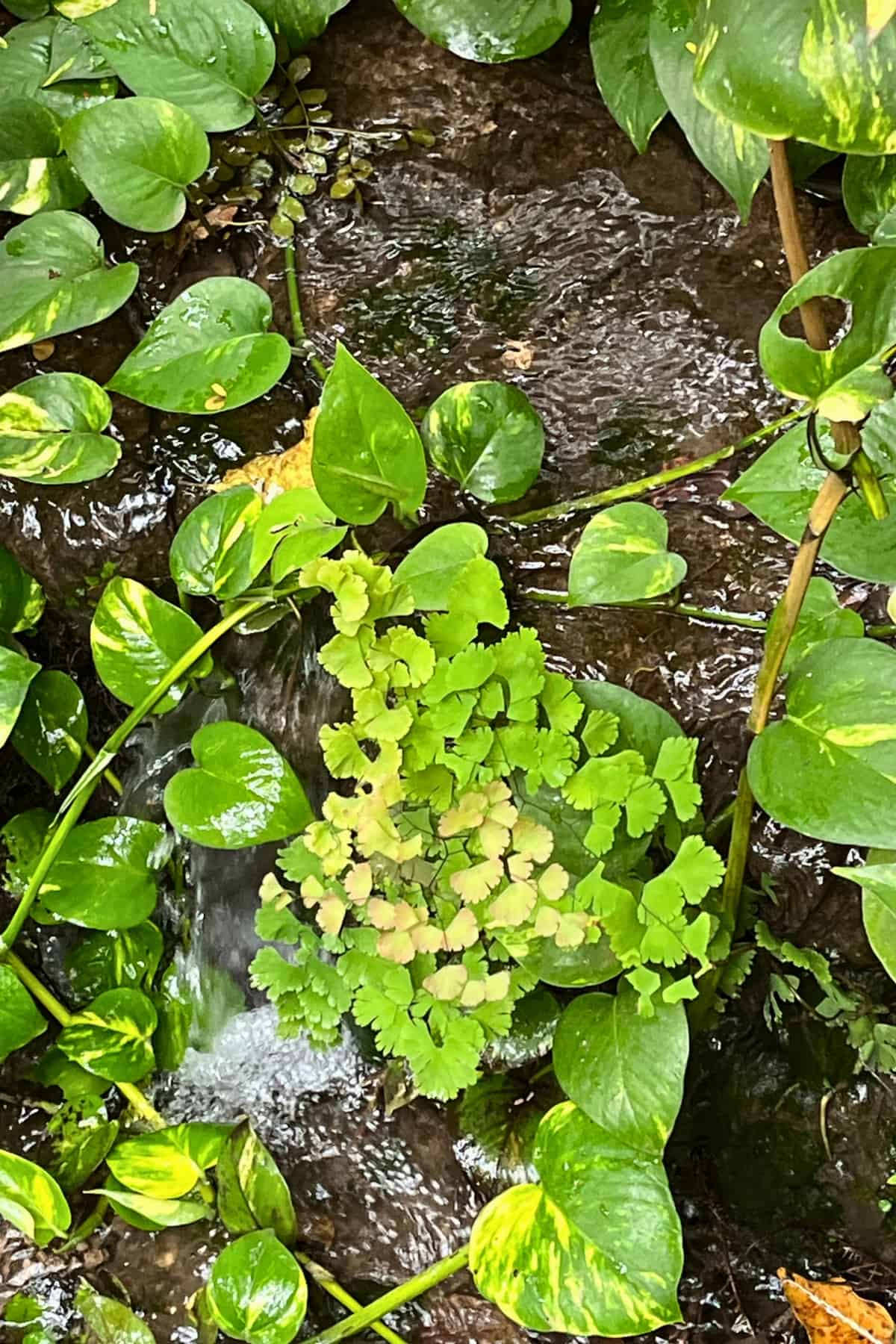
*Just note that growing in fresh, running water isn’t the same as being sat in wet soil. As with almost all tropical plants, it’s susceptible to root rot.
Ironically, (because of its constant need for moisture) overwatering is a common issue with this plant. You’ll be watering it more than most, so great drainage is essential.
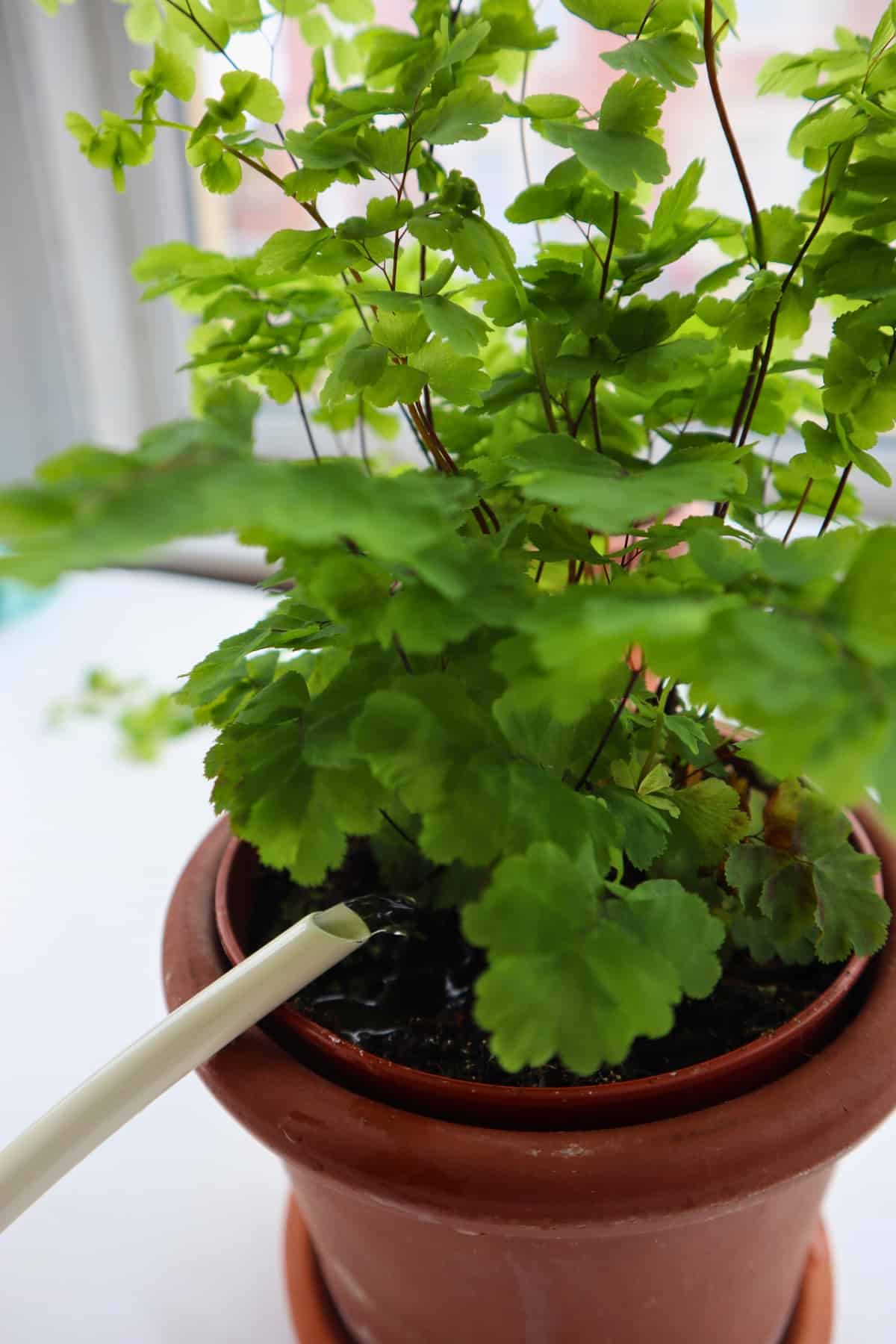
My number one top tip to satisfy thirsty ferns? Don’t keep them in a terracotta pot (or if you do, keep them in a plastic pot inside like I have).
Terracotta might look gorgeous, but because it rapidly wicks moisture away from the soil, it’s basically a high-speed way of drying your plant out.
Best Soil/Substrate for Adiantum
Surprisingly, the Delta Maidenhair Fern isn’t fussy when it comes to substrate.
It’ll grow just about anywhere in tropical countries…

It’s safe to say this plant doesn’t need any specific substrate.
What’s more important, however, is that the substrate supports the need for constant moisture. So, choose a well-draining substrate that has excellent water retention.
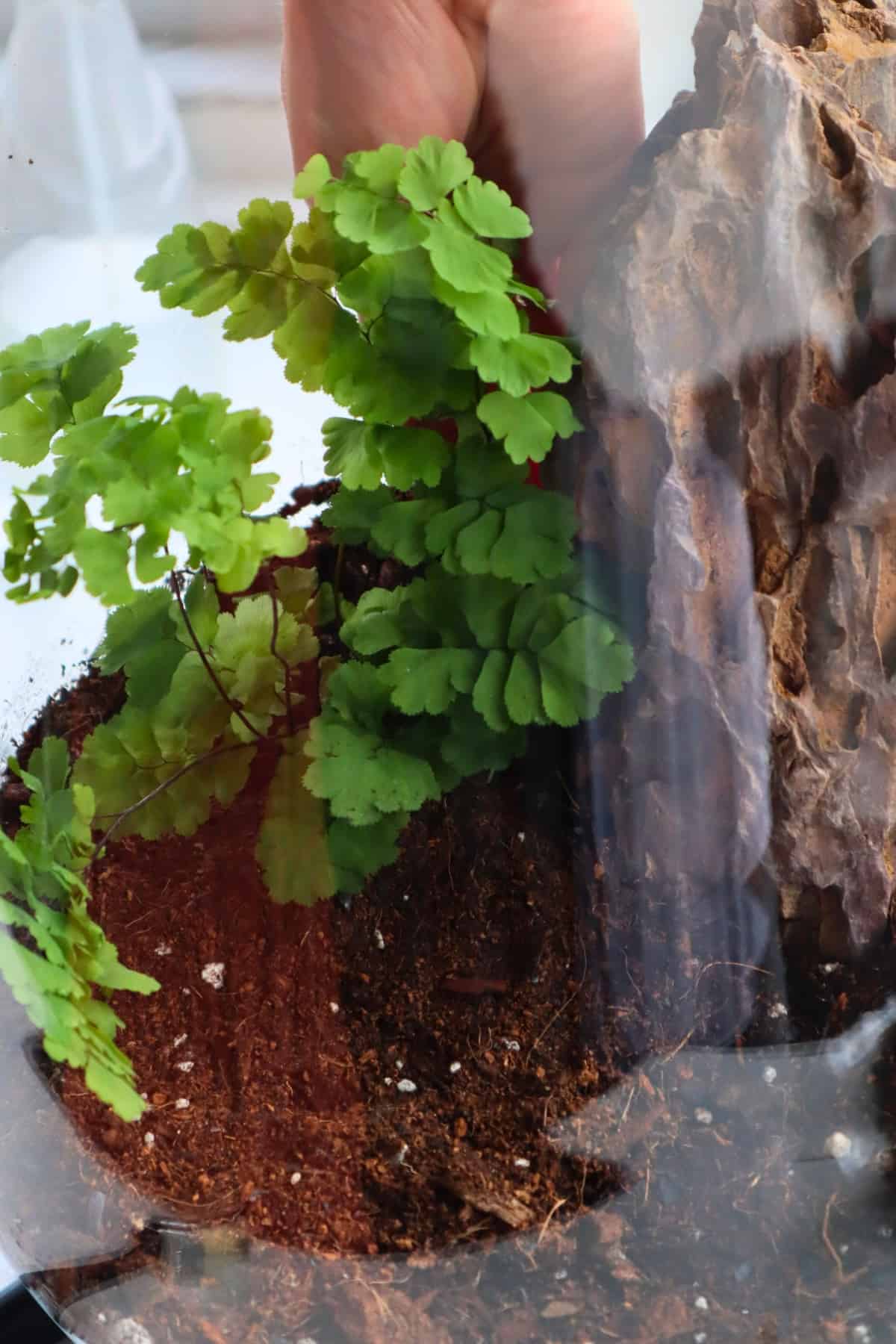
If you’re keeping yours as a houseplant it won’t need much fertilizer (it grows out of walls, after all), but if you’re putting yours in a terrarium build it’s always a good practice to add a slow-release organic fertilizer to the mix.
Earthworm castings are the best option here.
Temperature & Humidity Preferences
A true tropical fern, Adiantum raddianum needs a high temperature and humidity to thrive.
It’s sensitive to both, so it’s best to maintain at least 60% relative humidity and 65°F to avoid fronds shriveling and perishing.
Naturally, high humidity levels will go a long way in keeping it moist – too little humidity and the soil will dry out quickly.
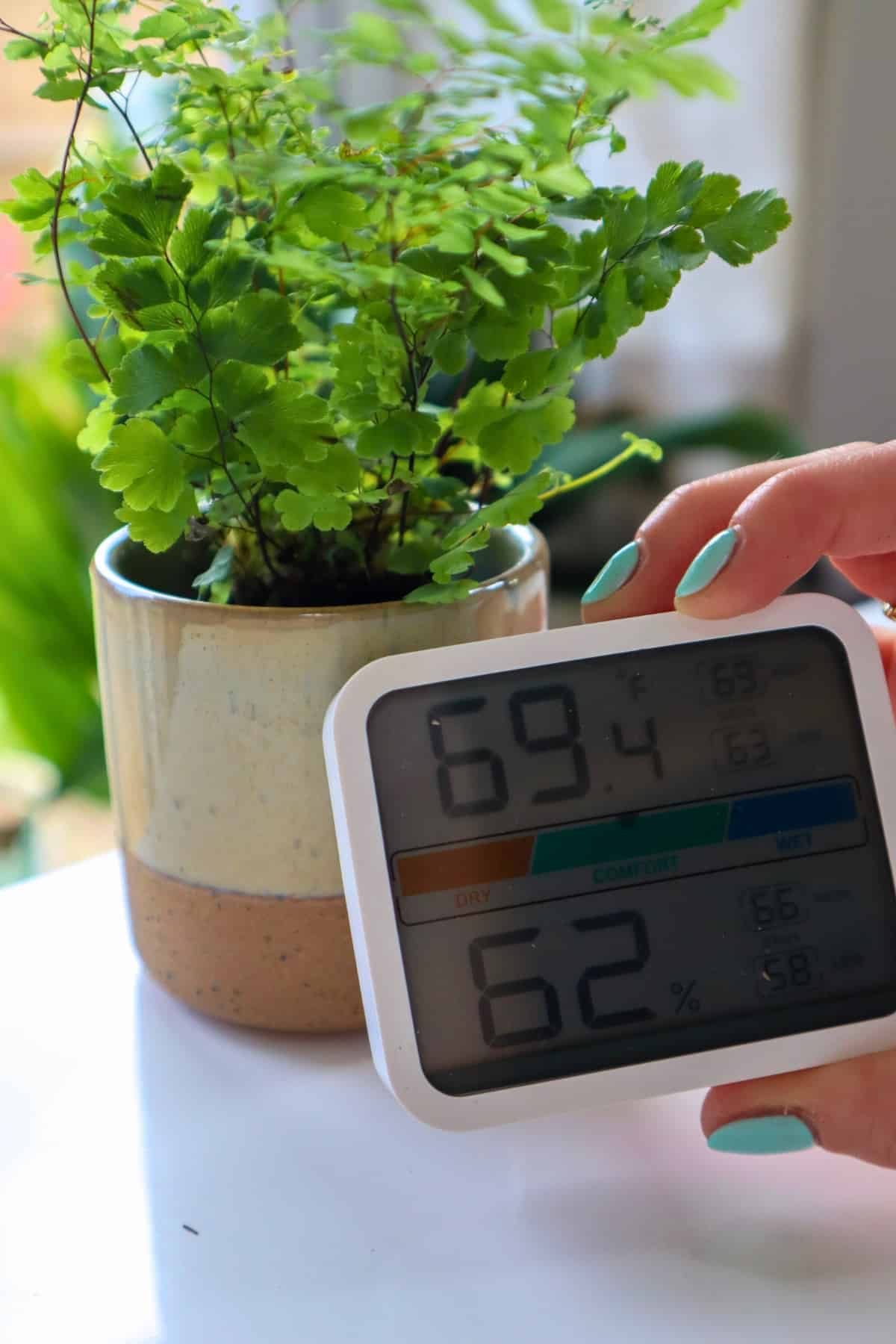
They absolutely thrive in terrarium setups for this reason. So, if you’ve ever been terrarium-curious, now is the time!
I’ve used the Delta Maidenhair Fern in several terrariums and it always adds so much texture to the piece.
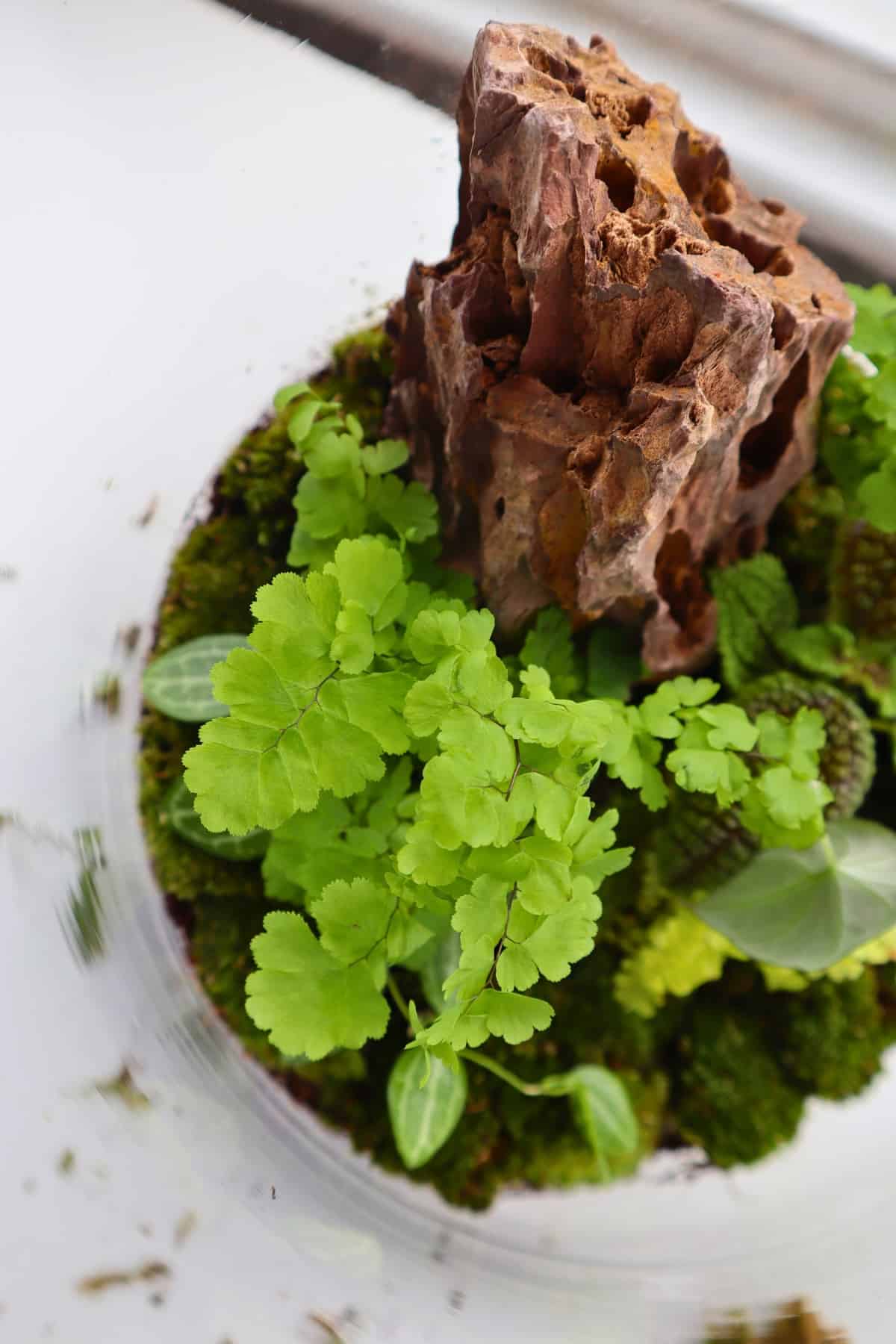
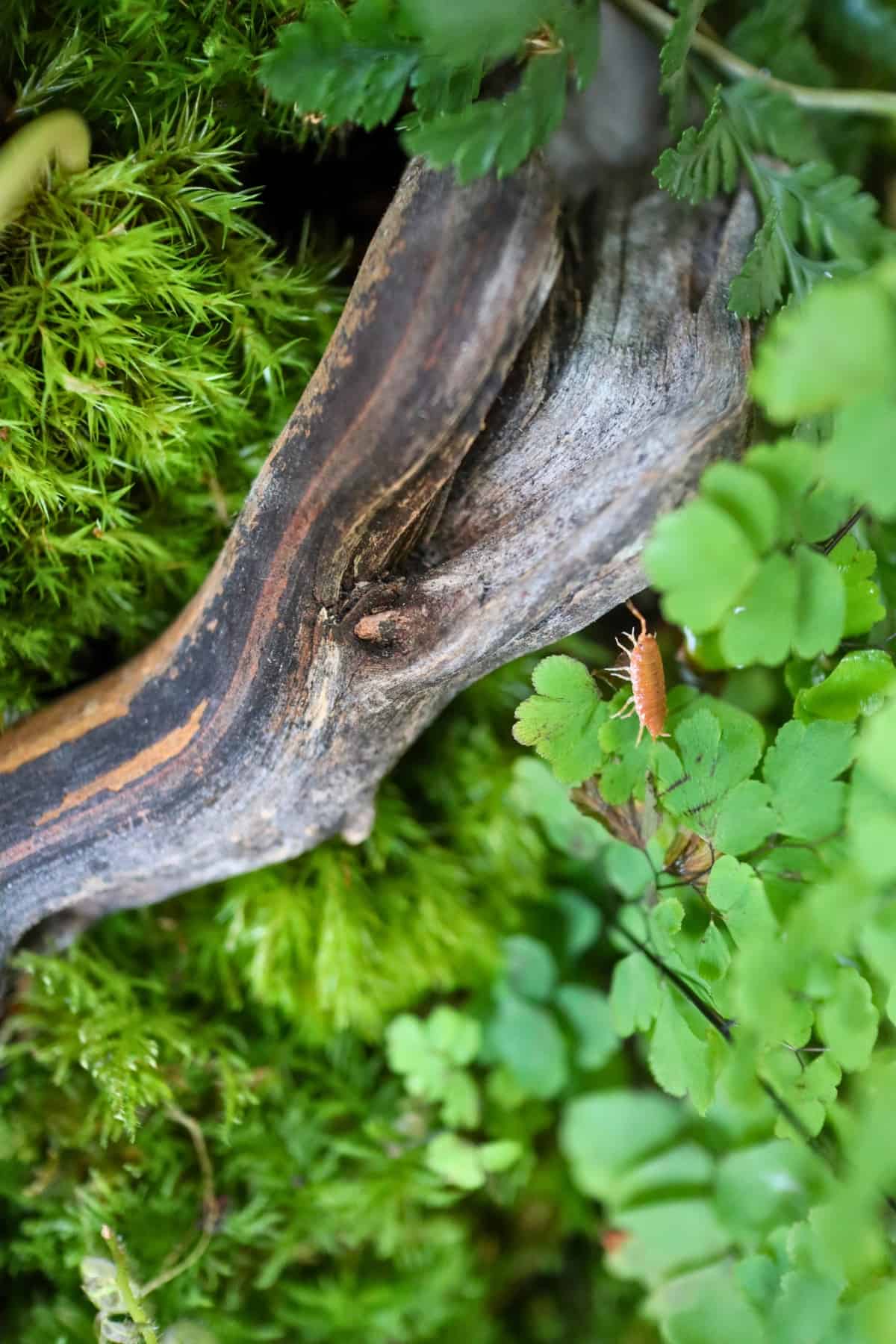
Adiantum raddianum Growth
Adiantum raddianum has thin, long black stems that reach up and unfurl to reveal dense fronds of the smallest and most delicate leaves.
As tempting as it may be, it’s important not to regularly touch the foliage, no matter how much you want to get your hands in and give it a good old tussle.
These ferns are very sensitive to the natural oils on your fingertips, and they can quickly damage them!
The best thing you can do is leave it alone to work its magic in peace.
But no matter how perfectly you care for this plant it’s a slow grower and isn’t in a hurry to get anywhere.
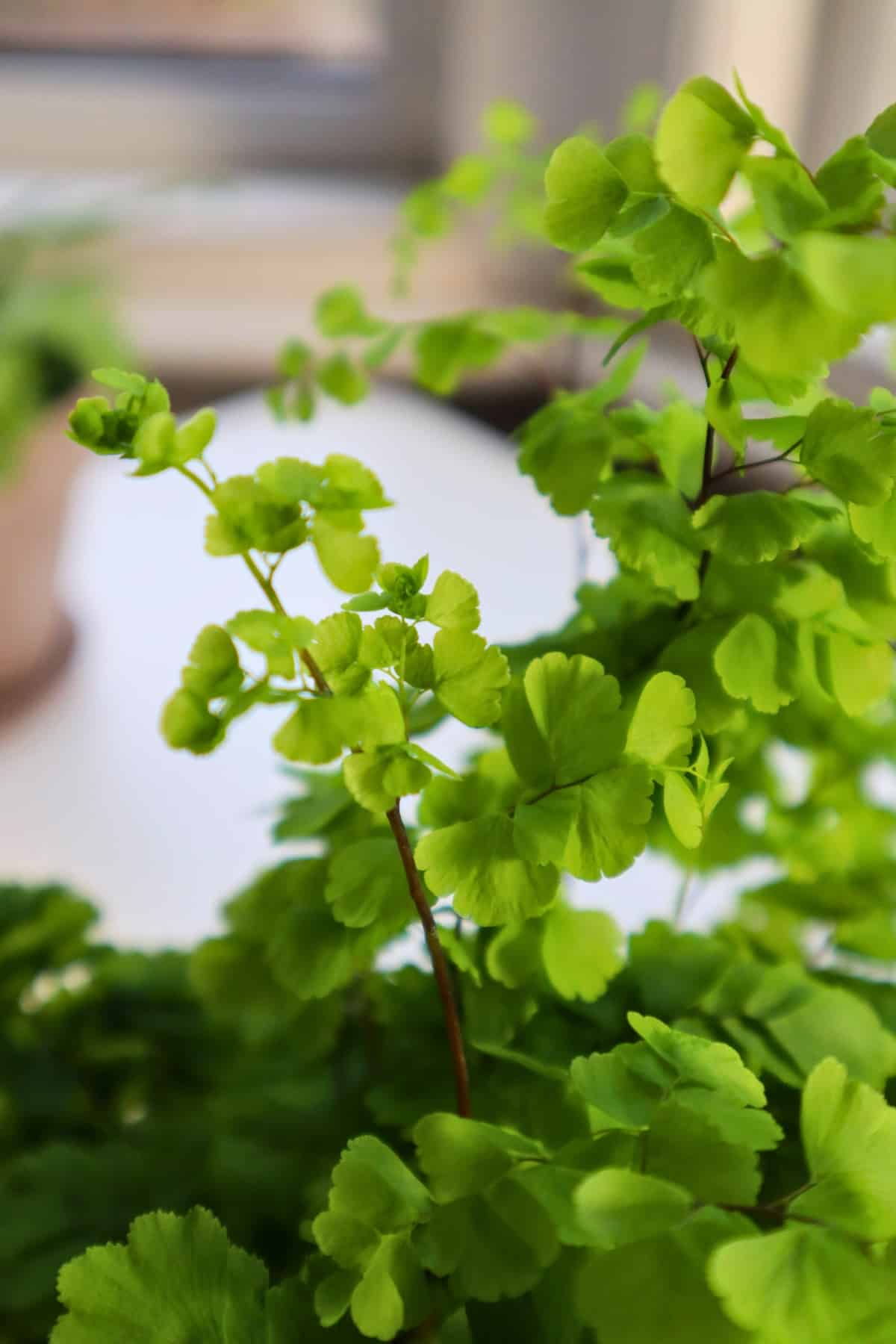
They can get fairly big in the right conditions, but this will be somewhat limited by the space it has to grow. So I wouldn’t worry about it outgrowing your home or terrarium any time soon.
How to Propagate Delta Maidenhair Fern
In nature, Adiantum ferns propagate via spores, but in the home, as long as your plant is healthy, you can propagate it via division.
Take it out of the pot and (very carefully) put your thumbs in the middle of the soil, gently teasing the roots and fronds into two, or more sections.
You may lose a little bit of foliage in the process – but it’s nothing to worry about.
Try to keep a few healthy fronds on each new plant to give them a fighting chance.
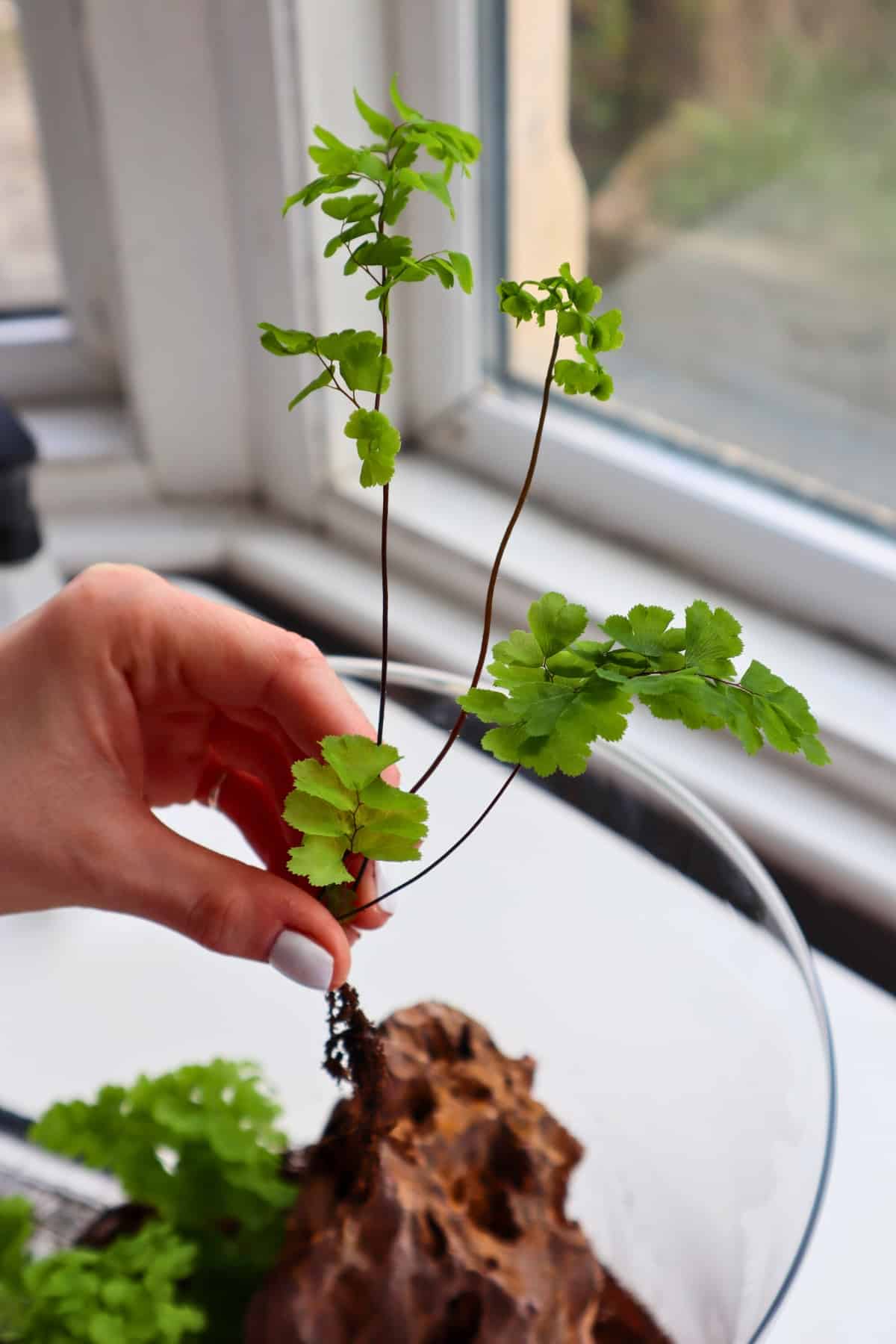
Adiantum Varieties & Similar Plants
With around 250 types of Maidenhair Ferns, you won’t be short on species to collect.
There’s a lot of variation here too, with funky star-shaped growth patterns and pink shades (yes, really!).
One of the closest species would be Adiantum microphyllum, the Dwarf Maidenhair Fern. It’s another great choice for terrariums, but in my experience, it is very uncommon and hard to find.
For another terrarium-ready fern, check out the Lemon Button Fern!
